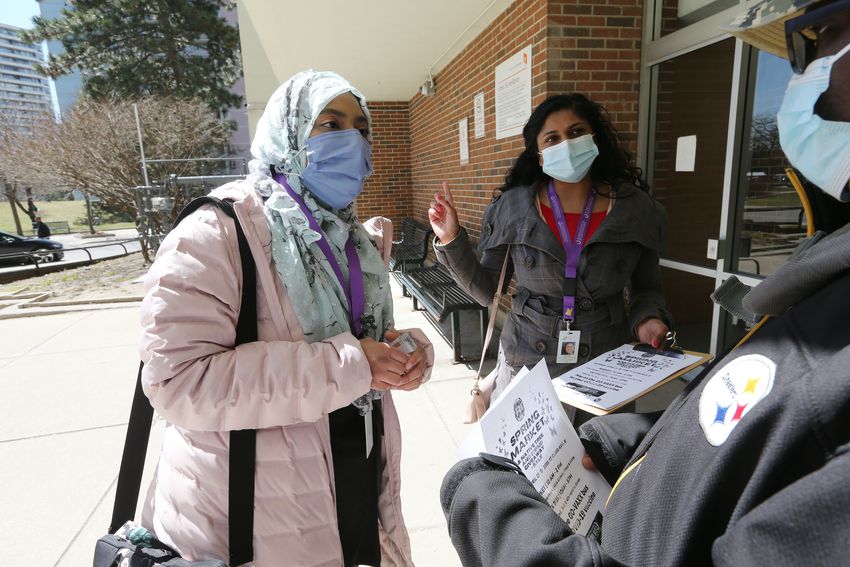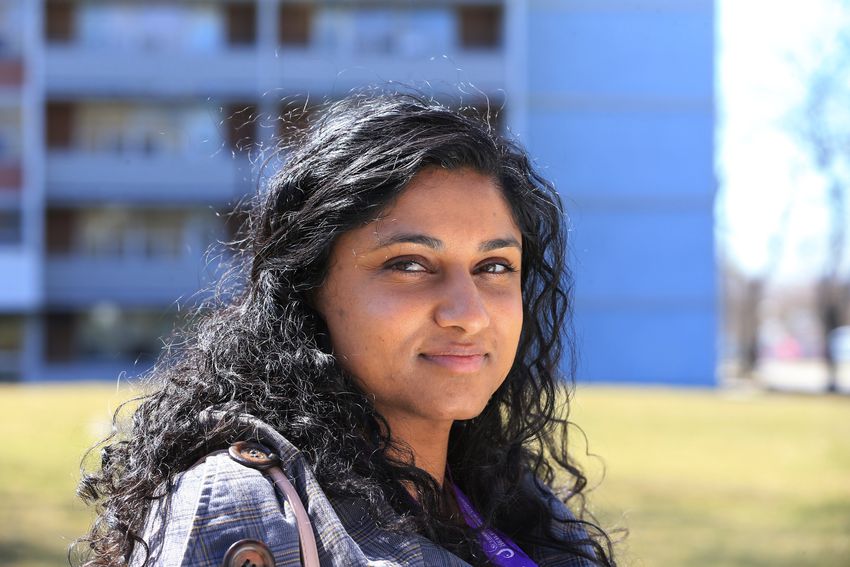Residents of neighborhoods hit hard by COVID-19 must be prioritized as the province expands its rollout of the antiviral Paxlovid, advocates and front-line community workers say.
The drug, which can help keep higher-risk people out of hospital, needs to be taken quickly — within a five-day window after the onset of symptoms — and requires skilled health-care workers to assess patients and guard against adverse medication interactions.
On Monday, the province announced expanded eligibility to testing and antiviral treatments for high-risk individuals as the sixth wave in Ontario continues to grow, with COVID-related hospitalizations reaching their highest level in seven weeks.
But advocates say the rollout of Paxlovid in higher-risk areas that have borne the brunt of COVID will require the same education, outreach and community supports that have fueled vaccine efforts in these neighbourhoods.
“We have to have a renewed concern about how to help these communities,” said Sophia Ikura, executive director of the Health Commons Solutions Lab, a publicly funded, not-for-profit organization located at Sinai Health. “We cannot leave these communities behind again.
“Even now in the fifth and sixth waves we still need an all-hands-on-deck approach.”
In an email to the Star, the Ministry of Health said it is using a variety of distribution channels to support equitable access to antiviral treatments including community health centers, high priority community-led agencies, and community-based primary care networks.
This will include working with lead agencies and community ambassadors “to lower barriers to care and develop targeted outreach and communications.” The ministry also said community ambassadors will be trained to provide culturally safe messaging to their communities around the eligibility criteria and access points for antivirals in multiple languages. It will also work with Indigenous Services Canada to ensure coverage and best practices on antiviral implementation, the ministry said.
The following high-risk groups are currently eligible to be tested and assessed for antiviral treatments: those aged 18 and over who are immunocompromised or who have had fewer than three vaccine doses and have at least one chronic medical condition; anyone 70 years old and over; and anyone aged 60 and over with fewer than three vaccine doses.
On Wednesday, the province will publish a list of pharmacies dispensing Paxlovid.
Ikura praised the expansion into pharmacies, but said the locations selected by the province will be key, pointing out the initial distribution of rapid tests to pharmacies included few locations in high-priority areas.
“If a limited number is going to be selected, they do need to reflect where there are lower rates of vaccination, where COVID is circulating and where people are really vulnerable to serious illness and death,” she said.
On Monday, 30 community leaders met to advocate for equitable distribution of Paxlovid, Ikura said. In addition to ensuring pharmacies dispensing antivirals were in high-priority areas, she said the group recommended, among other things, that information on Paxlovid, including an eligibility checklist and closest place to get the drug, be handed out with free rapid tests at community agencies.
Lydia-Joi Marshall, project lead with the Health Commons Solutions Lab, said from testing to vaccines, it’s clear “everybody has not experienced this pandemic in the same manner.”
“Although we said we were going to serve high-priority communities that were disproportionately impacted (by COVID), we still saw those who had more means have more access,” she said, noting disparities were particularly acute for vaccination. “And I think because things move so rapidly, we haven’t corrected some of those mistakes. And so the worry is that those will carry over to the antivirals rollout.”
Marshall, who helps lead a team of nearly 200 community outreach ambassadors, said some of those front-line workers recently spoke with residents to see if they were aware of antivirals.
“Resoundingly, we heard that people did not know what it was,” she said.
“Most of the people are very confused,” said Hafsa Akhter, a community outreach ambassador who works primarily out of the Scarborough Center for Healthy Communities. “The terminologies used to describe the drug — they are not familiar with them. It’s hard for them to understand and they have trust issues against it because they don’t understand.”
Akhter, who also works with the GTA non-profit South Asian Women’s Centre, said more education and outreach is needed, and that it has to be offered in multiple languages and in familiar formats, promoted by trusted members of the community.
She and other community outreach ambassadors have been working in higher-risk neighborhoods since late spring of 2021, helping educate residents about the benefits of COVID vaccines and ensuring clinics meet their needs.
Those same strategies must be adopted for the Paxlovid rollout, she said, noting there is little time to lose as COVID cases are again rising in the community following the removal of mask mandates.
Charlotte Naranjit, a community outreach ambassador in south Scarborough, has knocked on doors, handed out flyers and met with residents to help boost COVID vaccine uptake in the community.
In addition to raising awareness of out-of-hospital COVID treatments, sustained neighborhood efforts, similar to those used to vaccinate residents, are needed to ensure Paxlovid gets to those who need it most, she said.
“For some individuals, mobility and accessibility issues are such a big barrier,” Naranjit said. “There is still a lot of fear with some not wanting to come out of their homes. They want to stay in their own neighbourhoods. Some don’t have jobs and don’t have the resources to travel.
“Based on how we’ve administered the vaccines… we’ve learned we need to speak with residents and understand how best we can support them with Paxlovid.”
Naranjit said while many residents she’s spoken with about antivirals have questions about the drug, other residents — especially those who are immunocompromised — are asking why they haven’t yet been able to access it.
“Some have come up to me and asked: ‘Why are they not providing this to us? Why did they not bring this to us earlier? Why aren’t they giving this to us now?’”
Paul Bailey, executive director of the Black Health Alliance, said right now the lack of clarity around Paxlovid and how people in the hardest hit parts of Toronto can access it deepens the pattern of inequality.
“We would be remiss if we’re now going to rush to roll out and get into pharmacies, and not think carefully about equity in any rehashed rollout, and how these communities specifically will access it,” he said.
Bailey agrees pathways to Paxlovid need to be clear and embedded in communities, as has been done with testing and vaccinations, through the efforts of people like Naranjit and Akhter.
“We need to learn from and correct the public health communication errors, ie the recent messaging from the province which suggests the pandemic is over, otherwise the public trust that is so needed to make these interventions work will continue to be eroded and make these interventions ineffective in stemming the preventable hospitalizations and deaths,” he said.
Toronto’s health board chair Joe Cressy said the city already has the infrastructure in place to reach hard-hit areas, primarily through partnerships with about 200 community organizations, and almost 650 community ambassadors.
“We have trusted boots on the ground, trusted neighborhood leaders on the ground, in dozens and dozens of languages,” he said. “We built that model with the vaccination campaign, now we need to pivot it to address, not only COVID care and recovery, but other health needs as well.”
It’s a model that should be emulated not just across the province, in other hot-spot neighborhoods, but throughout North America, he said. “It’s simple really. Reach people where they’re at and leave nobody behind.”
JOIN THE CONVERSATION



